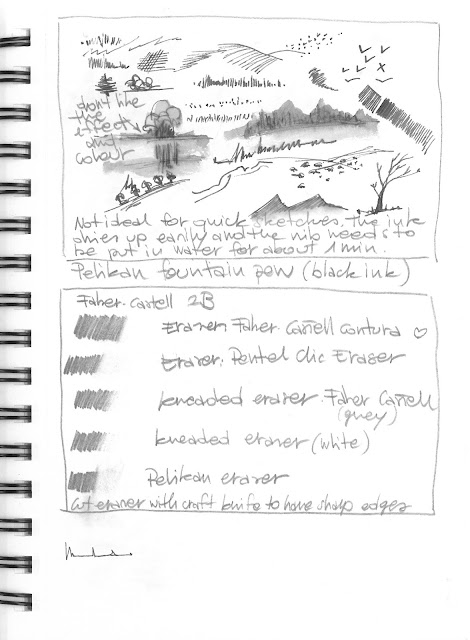
It took me even more time to go through lesson 4, than to go through all of the three previous lessons. I lost focus and got distracted by so many other things lately that this mini-class got to the bottom of my to-do wishlist. But here I am, finally.


The last lesson focused on tonal values, big shapes and shadows to just give a quick impression of your subject, capturing the atmosphere without going into too much detail. And this is something I have been lacking.
Recognising tonal values has always been difficult for me. It is easier if I’m looking at a black and white picture, but when working on the spot, recognising the value of the colours has proven a real challenge. I can narrow my eyes trying to see the simple value pattern, but it doesn’t always work, especially if I’m looking at a landscape and there are a lot of colours. Doing a quick tonal sketch and adding a value scale can help, but really doesn’t solve my problem; I guess practice will improve my observational skills. In the meantime, I had the chance to test different ways to create tones using different tools and techniques.


My favourite so far is using a water-soluble pen or pencil and a water brush to dissolve the colour and create a shaded wash. Even the most boring drawing can become interesting when adding tones.
Capturing the direction of the light by adding shadows it has also proven to change the mood of a drawing. And one of the best tips I must remember is to always leave some white paper for the lightest lights.


So this is the end of the first of the Cathy Johnson’s online mini-classes! The overall course was good value for money, probably a bit too basic for me, but I am one of those people that forget things easily, so it was a good way to return to the basics and take on board all the tips given in the lessons.
I put together a summary list of all the tips that I should remember when doing a quick sketch, but also of some of the things that I discovered about my tools.
Favourite tools for quick sketching //
- Faber-castell PITT artist pen sanguine – brush size (waterproof) + watercolours
- Staedler fine liner 0.3 black (waterproof)
- Derwent inktense peacock blue (watersoluble)
- TOMBOW ABT Redwood 899 (watersoluble) brush and fine point + watercolours (THE BEST)
- Eraser Faber-Castell
Best tips for quick sketching //
- Consider the time available when starting a sketch – start with the big shapes and add details later on as you have time
- Consider gesture sketching when trying to capture movement
- See objects as basic shapes
- Use thumbnail sketches
- Develop your own visual symbols
- Identify tonal values by squinting your eyes
- Choose/identify light direction
- Leave some white paper for lighter lights
In the meantime you can have a look at all my sketches from the previous lessons here.





















